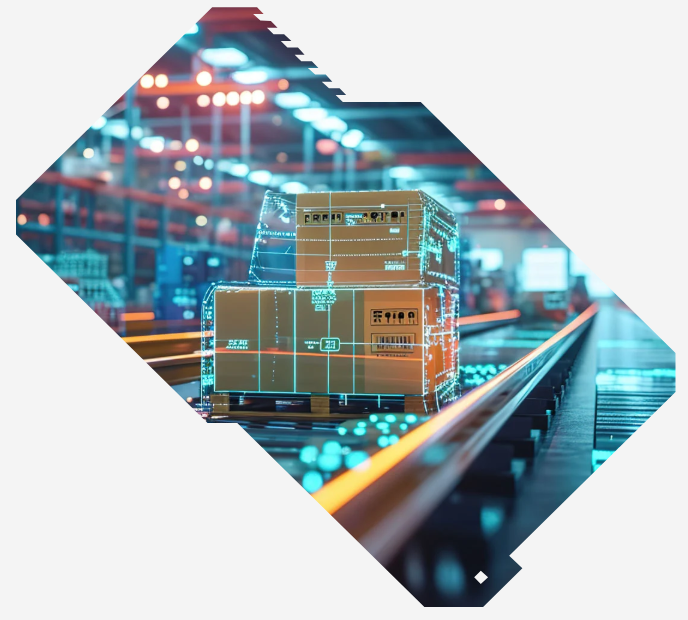
Why supply chain resilience matters and how to build it
This article explores the rising regulatory focus on supply chain resilience, the importance of having strong contingency strategies, and gives you clear practical steps you can take to identify and manage high-risk suppliers.
Organisations are increasingly relying on complex supply chains to deliver services efficiently and cost-effectively. Some industry sectors such as retail, automotive, healthcare to name just a few, are built on their supply chains and many organisations across all sectors, are choosing to outsource functions and services to streamline operations and focus on their core capabilities.
In both scenarios, the added exposure to third-party risks needs to be identified and managed. When critical functions are managed externally, it becomes more challenging to ensure they are delivered efficiently, and in a resilient manner that protects your business. The key question is: how confident are you, that your supply chain relationships can support your business without disruption?
Why supply chain resilience is gaining regulatory attention
Regulatory bodies are increasingly scrutinising supply chain risk. Factors driving this focus include evermore complex interconnected networks, an increase in customer expectations in terms of increased flexibility and shorter timescales, and an upsurge in wider and global on and off-line disruptions. Businesses are still ultimately accountable for the performance and security of the services delivered by third parties. While outsourcing can help reduce internal workloads and operational costs, responsibility for risk mitigation stays firmly in-house.
As supply chains become more layered, it’s vital to have a clear process for evaluating and managing third-party dependencies, especially as these suppliers face their own set of vulnerabilities.
1. What supply chain resilience means
Definition
Supply chain resilience is your organisation’s ability to absorb shocks, respond quickly, and maintain continuity when disruption hits.
What it involves
It’s about predicting potential issues, adapting in real time, and bouncing back fast when the unexpected happens.
Why it matters
Resilient supply chains reduce lost revenue, limit operational costs, support customer retention, and protect brand trust.
2. Why supply chain resilience has become business-critical
Constant disruption
Events like COVID-19, extreme weather, and political tensions have exposed the fragility of global supply chains. Resilience is not a “nice to have”, it’s an organisational necessity.
Operational advantage
Firms that maintain flow during disruption can gain market share and outperform slower-moving rivals.
Long-term cost savings
Minimising downtime and avoiding last-minute fixes reduces long-term costs, even if it means higher up-front investment.
Customer expectations
Customers expect consistency. Reliable delivery strengthens loyalty and increases repeat business, and your ability to continue to deliver even in tough conditions, can set you apart from your competitors, win over new business and increase your market share.
3. What you can do to deliver supply chain resilience in practice:
We recommend that you follow this comprehensive 8-point checklist as a journey – it’s not intended to be a one-off tick-box exercise:
- Supplier diversification: Work with multiple suppliers across different geographies to reduce exposure to any single failure point. This includes developing relationships with one or more backup suppliers of critical services, so that you have pre-vetted alternative providers ready to step in at short notice to reduce exposure if your primary provider encounters problems.
- End-to-end visibility: Track activity across your full supply chain, including second- and third-tier suppliers, to spot risks early.
- Pinpoint weak spots: Audit your supply chain to flag risks, like sole-source suppliers, congested ports, or fragile IT systems. Then take action to address these! It’s also wise to evaluate each of your key suppliers’ own resilience, not just in relation to your needs. You need to know that they have a resilience approach and do not have inherent risks that are harder to relate directly to services they deliver to you. Do they have contingency plans in place internally? Can they continue their business operations during a crisis? By aligning your own business continuity planning with those of your key suppliers, you build a stronger, more adaptive supply chain.
- Operational agility: Make sure you can move quickly to switch suppliers, reroute shipments, or shift production when conditions change. Prioritising agility over cost-savings in your supply chain to maintain continuity of your operations, is key.
- Strong partnerships: Build trust and alignment with suppliers and logistics partners. Open lines of communication make response faster and more effective. Specifically, share data, discuss risk mitigation, and build shared contingency plans.
- Smart tech upgrades: Adopt tools that give you real-time data, automate processes, and improve communication across your network., for example AI, automation, machine learning, blockchain, and digital twins to improve your forecasting, speed up decisions, and gain insight into supply chain dynamics.
- Scenario planning: Develop detailed response plans for likely disruptions. Develop fallback strategies with alternative suppliers, routes, production lines. Then test and update them regularly.
- Measure and refine: Track the performance of your resilience efforts. Adapt your strategy based on what works, what doesn’t as well as what changes. Get expert support from resilience and business continuity providers.
Staying ahead in a complex supply chain landscape
As global supply chains grow more complex, the risks associated with third-party dependencies increase in parallel. With regulators demanding greater transparency and control, businesses must take proactive steps to shore up resilience.
By identifying high-risk suppliers, embedding resilience into supplier management processes, and maintaining open lines of communication, organisations can reduce the impact of potential disruptions. Effective supplier risk management isn’t just good governance; it’s a strategic priority for long-term business continuity.
Support to strengthen your supply chain
Creating and maintaining a resilient supply chain can be a challenge, but you don’t have to face it alone.
Our team can help you conduct a comprehensive business impact analysis, mapping your key suppliers and assessing the criticality of their services. Using our powerful Shadow-Planner platform, we can automate this process or guide you through it manually, whichever suits your environment.
Take a proactive next step towards better supply chain resilience
As part of our managed services offering, we carry out third-party supplier Business Continuity Management (BCM) assessments. This gives you assurance that your external partners are prepared for disruptions - so their disruptions won’t become yours!
